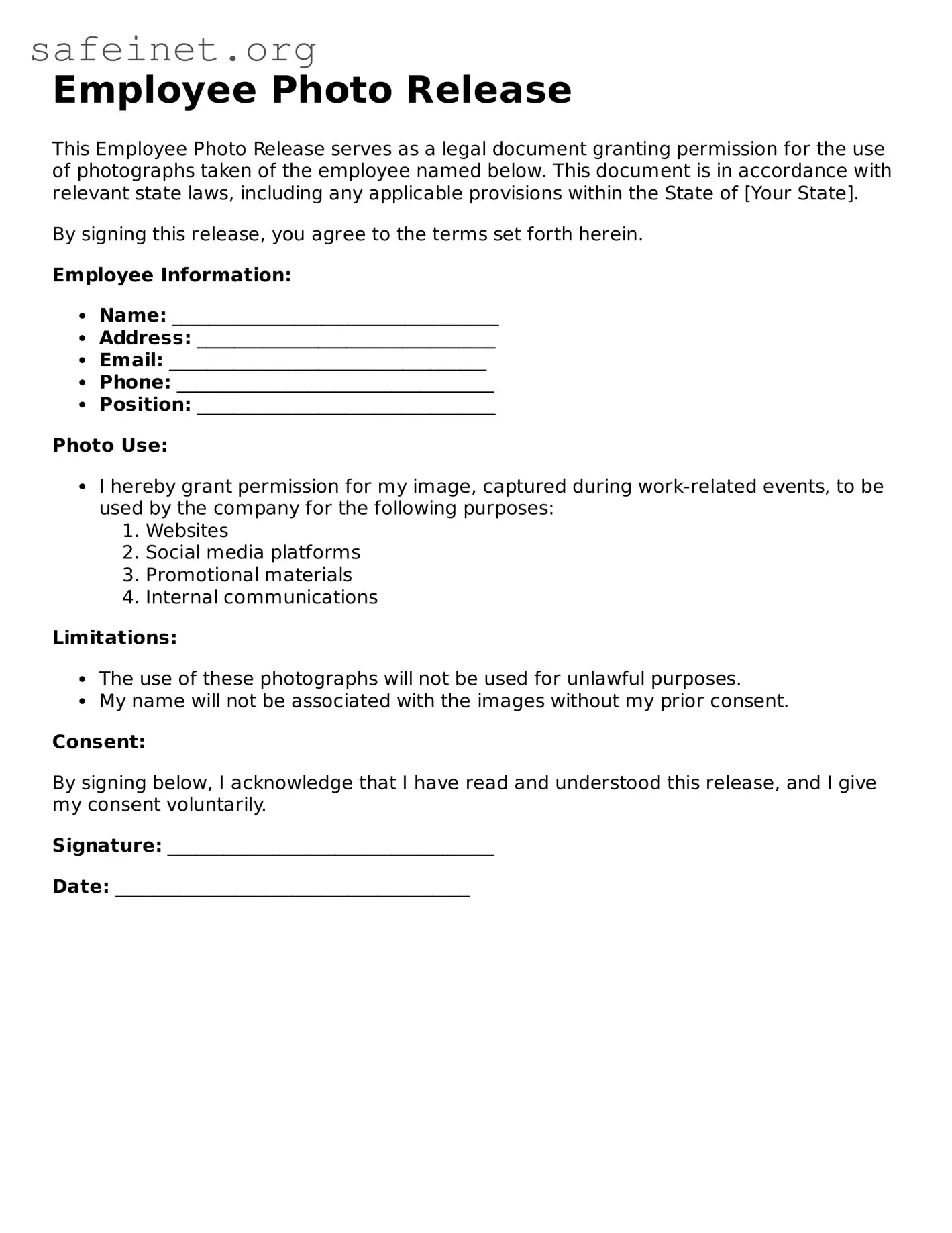The Employee Photo Release form is similar to a Media Release form, which is often used by individuals when allowing organizations to use their likeness or performances in various media formats. Like the Employee Photo Release, a Media Release specifies how an individual's image or voice can be utilized, ensuring that the individual grants permission for such uses. It gives creators the legal backing to publish or broadcast images, providing a similar level of protection and consent to what is outlined in an Employee Photo Release.
Another document that shares similarities is the Video Release form. Typically used in video production contexts, this form allows the production team to obtain permission to use an individual's appearance, voice, or performance in a video. Just like the Employee Photo Release, it outlines the rights that the organization has to the content in question and serves to protect both the individual and the company from potential legal disputes regarding image rights in future distribution.
The Photo Release for Minors is also comparable, as it is specifically designed for use when images of children are involved. This form requires parental or guardian consent, similar to how an Employee Photo Release allows an employee to authorize the use of their image. The main difference is the necessity for obtaining approval from a legal guardian, emphasizing the extra layer of protection for minors’ rights in photographic contexts.
Another closely related document is the Talent Release form. Commonly used in entertainment and media production, this form secures permission from actors, models, or other talent involved in a project to use their image and performance. Like the Employee Photo Release, it clarifies the terms under which these materials can be used, thereby protecting both the organization and the individual’s rights, ensuring that all parties are aware of how the images will be displayed or utilized.
The Consent Form for Marketing Use is another document with parallel purposes. This form is employed by businesses when they intend to use customer or client images for promotional activities. Similar to the Employee Photo Release, a Consent Form ensures that individuals have granted their approval for their likeness or testimonials to be used in marketing materials, protecting the rights of both parties and enabling organizations to engage in effective promotional efforts.
The Social Media Release form is increasingly used by businesses looking to share employee or customer images and testimonials on social media platforms. This document aligns closely with the Employee Photo Release, as it outlines how a person's image may be shared and the scope of the consent granted. By obtaining this release, companies can confidently share content while respecting the privacy and agency of those featured.
The Waiver of Liability form represents another similar document that arises in contexts where an organization may want to mitigate its risks while utilizing images. While the primary purpose of this form is to release the organization from liability related to activities involving individuals, it often overlaps with image release, ensuring that individuals understand and agree to the use of their images while waiving claims for related issues that may arise.
Lastly, the Publicity Release form is akin to the Employee Photo Release in that it grants an organization permission to use an individual’s name, likeness, and other identifying information for promotional purposes. This form is typically used in a broader context, often encompassing not just image rights but also branding opportunities. Though it has a more expansive focus, the underlying principle of obtaining informed consent aligns closely with the goals of the Employee Photo Release, ensuring clarity about how individuals' identities will be used by an organization.
